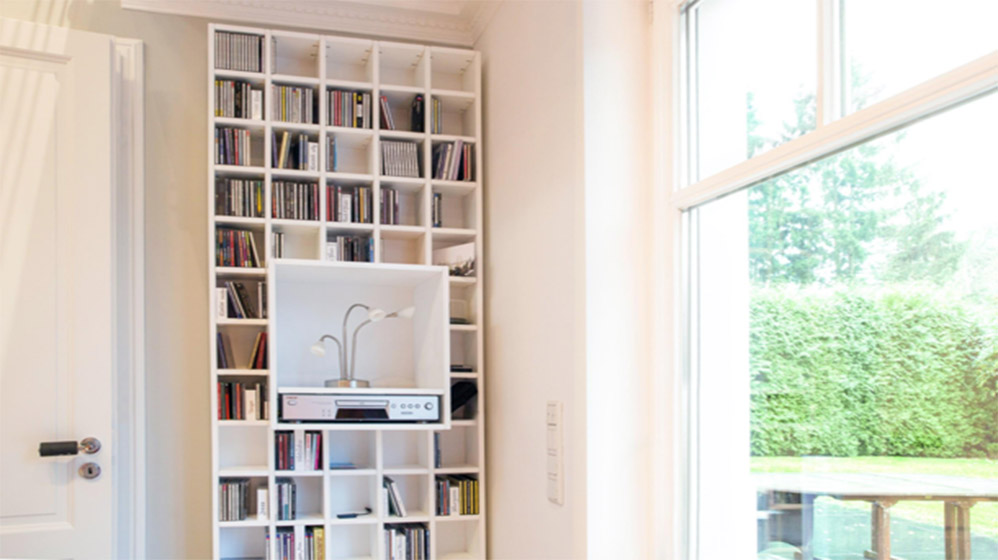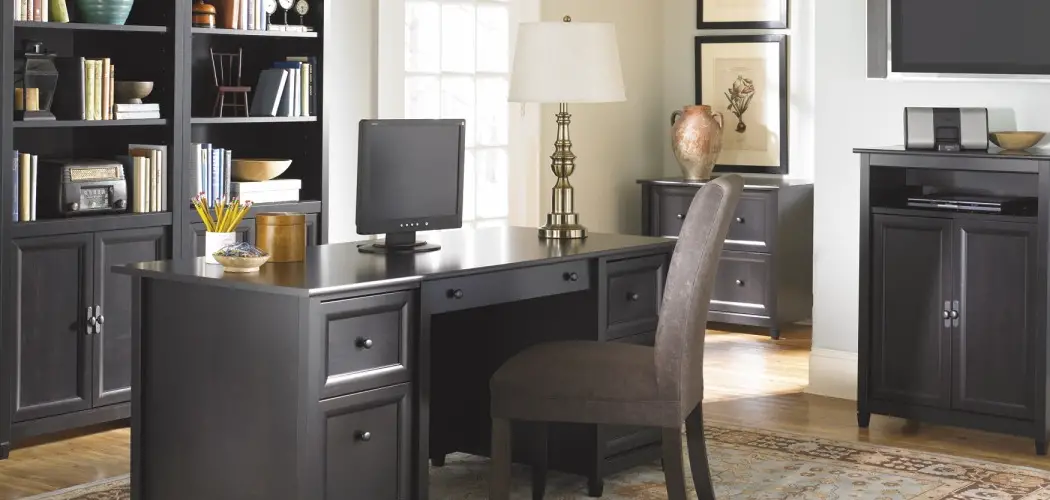Planning Your Home Office Cabinets

Planning your home office cabinets is like planning a trip to the market – you need to know what you’re buying, how much space you have, and how much you’re willing to spend. But instead of buying groceries, you’re buying storage solutions that’ll help you stay organized and productive.
Space Requirements
Before you start dreaming about fancy cabinets with built-in coffee makers, you need to know how much space you actually have. Measure your office area, considering not just the floor space, but also the height of your walls and any existing furniture. You want to make sure your cabinets fit comfortably without blocking any doors or windows.
Remember, it’s better to have a little extra space than to cram everything in and make it feel like a cluttered mess.
Desired Functionality, Building home office cabinets
Now, think about what you actually need your cabinets to do. Do you need lots of drawers for files and folders? Or do you prefer open shelves for easy access to your favorite books and decorations? Maybe you need a dedicated space for your printer or a pull-out keyboard tray. The more specific you are, the better your cabinets will meet your needs.
Don’t be afraid to get creative! There are tons of cool features you can add to your home office cabinets, like built-in charging stations, sliding doors, and even a secret compartment for your most valuable possessions.
Budget
Of course, you need to consider your budget. Cabinets can range from a few hundred dollars to thousands, depending on the materials, features, and size. It’s a good idea to set a budget beforehand so you don’t get carried away and end up spending more than you can afford.
If you’re on a tight budget, don’t worry! There are still plenty of affordable options available. You can even consider building your own cabinets if you’re handy with tools.
Measuring and Designing a Layout
Once you have a good idea of your space requirements, functionality, and budget, you can start planning the layout of your cabinets. This is where a little bit of creativity and planning can go a long way.
You can use a simple piece of paper and a ruler to sketch out your ideas, or you can use a free online design tool to create a more detailed plan.
Features to Consider
Here’s a checklist of features you might want to consider for your home office cabinets:
- Drawers: Drawers are great for storing files, folders, and other items that you want to keep out of sight. Consider using different drawer sizes to accommodate different items. You can also add dividers or trays to further organize your drawers.
- Shelves: Shelves are perfect for displaying books, decorations, or other items that you want to keep on hand. You can choose from fixed shelves or adjustable shelves to create the perfect configuration for your needs.
- Doors: Doors can help to keep your cabinets looking neat and tidy. You can choose from solid doors, glass doors, or even sliding doors.
- Built-in Organizers: Built-in organizers can help you maximize the storage space in your cabinets. Consider adding features like pull-out trays, file holders, or spice racks.
Choosing the Right Materials and Styles

Selecting the right materials and styles for your home office cabinets is crucial for creating a functional and aesthetically pleasing workspace. It’s like choosing the right outfit for a job interview – you want something that looks good, fits well, and reflects your personality.
Material Considerations
The materials you choose will significantly impact the look, durability, and cost of your cabinets.
- Wood: Wood is a classic choice for cabinets, offering warmth, natural beauty, and durability. It’s available in various species, each with unique grain patterns and colors. However, wood can be susceptible to scratches, dents, and moisture damage.
- Metal: Metal cabinets offer a sleek, modern look and are incredibly durable. They are resistant to scratches, dents, and moisture. Metal can be a bit more expensive than wood, and it may not provide the same warmth or natural beauty.
- Laminate: Laminate is a cost-effective and versatile option that mimics the look of wood, stone, or other materials. It’s easy to clean and resistant to scratches and dents. However, laminate can be less durable than wood or metal, and it may not have the same level of sophistication.
Cabinet Styles
Cabinet styles play a significant role in the overall look and feel of your home office.
- Traditional: Traditional cabinets feature ornate details, such as carvings, moldings, and raised panels. They often have a warm and inviting feel and can complement a classic or formal home office.
- Modern: Modern cabinets are characterized by clean lines, simple designs, and a focus on functionality. They often feature sleek, minimalist details and can create a contemporary and sophisticated workspace.
- Contemporary: Contemporary cabinets combine elements of both traditional and modern styles. They may feature some ornate details, but they are generally simpler and more streamlined than traditional cabinets.
Choosing a Style That Complements Your Home Office
When choosing a cabinet style, consider the overall design of your home office.
- Color Palette: Select cabinet colors that complement the existing color scheme of your home office.
- Lighting: Consider the amount of natural and artificial light in your home office when choosing cabinet finishes. Darker finishes may absorb light, while lighter finishes can reflect light.
- Furniture: Ensure your cabinets complement the existing furniture in your home office.
Building and Installing Home Office Cabinets: Building Home Office Cabinets

Now that you’ve planned your home office cabinets and chosen the right materials and styles, it’s time to get your hands dirty and build those bad boys! Building custom cabinets can seem daunting, but with a little patience and the right tools, you’ll be a cabinet-building pro in no time.
Building Your Cabinets
Before you start hammering and sawing, gather your materials and tools. You’ll need a saw (circular saw or miter saw), drill, screwdriver, tape measure, level, pencil, and clamps. Once you have everything ready, follow these steps:
- Cut your cabinet sides, shelves, and back panels to size. Remember to account for any joinery you’ll be using.
- Assemble the cabinet sides and back panel using glue and screws. You can use dowels, pocket holes, or other joinery techniques for extra strength.
- Attach the shelves to the cabinet sides. Make sure the shelves are level and evenly spaced.
- Install any hardware, such as drawer slides or door hinges.
- Finish the cabinets by sanding, painting, or staining them. You can choose any finish that complements your home office decor.
Installing Your Cabinets
Once your cabinets are built, it’s time to install them in your home office. There are a few different installation methods, each with its own advantages and disadvantages.
Wall-Mounted Cabinets
Wall-mounted cabinets are a great option for small spaces, as they don’t take up any floor space. They’re also easy to install and can be easily rearranged if needed. To install wall-mounted cabinets, you’ll need to use sturdy wall anchors, especially if your walls are made of drywall.
Freestanding Cabinets
Freestanding cabinets are a good choice if you don’t want to drill into your walls. They can be placed anywhere in your home office and can be easily moved if you need to rearrange your furniture. Freestanding cabinets are usually heavier than wall-mounted cabinets, so make sure the floor can support their weight.
Built-in Cabinets
Built-in cabinets are a more permanent solution, but they can create a truly custom look for your home office. They’re typically installed during construction or renovation, and they’re often designed to fit seamlessly into the existing space.
Tips for Installing Cabinets
- Use a level to ensure your cabinets are perfectly straight and aligned. This will prevent them from looking crooked or uneven.
- Use a stud finder to locate the studs in your walls. This will ensure that your cabinets are securely attached to the wall and won’t come loose.
- If you’re installing cabinets on drywall, use wall anchors to provide extra support.
- Pre-drill holes before screwing in any hardware to prevent the wood from splitting.
- Take your time and measure twice before cutting. This will help to ensure that your cabinets fit perfectly in your home office.
Building home office cabinets is a great way to maximize space and create a functional workspace. You can even incorporate sustainable materials and practices, just like you would when choosing a green bathroom vanity cabinet. For instance, using reclaimed wood or bamboo for your home office cabinets is an eco-friendly choice that also adds a unique aesthetic.
Building home office cabinets requires careful planning and attention to detail, just like choosing the right bathroom vanity cabinets in Las Vegas. You want to ensure that the design complements your space and provides ample storage. While bathroom vanities focus on functionality and aesthetics in a smaller space, home office cabinets need to be both practical and visually appealing to create a productive workspace.
